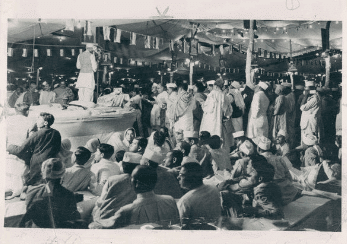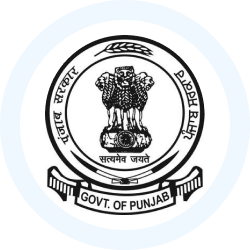Purna Swaraj–Lahore Session of the Congress, 1929 | Punjab State (PPSC) PSC: Preparation - PPSC PCS (Punjab) PDF Download
| Table of contents |

|
| Introduction |

|
| Gurdwara Reform Movement |

|
| Sikh Gurdwara Act |

|
| Babbar Akali Movement |

|
| Naujawan Bharat Sabha Sardar |

|
Introduction

Background of the Purna Swaraj Resolution:
- In December 1928, the Congress Session in Calcutta issued an ultimatum to the British Government, demanding dominion status by December 1929.
- If the demand was not met, a nationwide Civil Disobedience Movement would be launched.
- Lord Irwin, the Governor-General, responded by promising some constitutional reforms that would eventually lead to dominion status for Indians.
Shift in Congress Leadership:
- Indian leaders like Mahatma Gandhi, Tej Bahadur Sapru, Pandit Madan Mohan Malaviya, and Annie Besant urged the Governor-General to find a more liberal solution for constitutional reforms.
- Within the Congress, younger leaders such as Subhash Chandra Bose and Jawaharlal Nehru advocated for complete independence rather than dominion status.
Lahore Session of Congress (December 1929):
- At the historic Lahore Session in December 1929, under the presidency of Jawaharlal Nehru, the Congress adopted a resolution demanding complete independence (Purna Swaraj).
- The resolution authorized the Congress Working Committee to launch a Civil Disobedience Movement across the country.
- It was also decided to observe January 26 as Purna Swaraj Day throughout India.
Gurdwara Reform Movement
Akali Movement (Gurdwara Reform Movement):
- The Akali Movement, also known as the Gurdwara Reform Movement, was initiated by the Sikhs to liberate their shrines, or Gurdwaras, from the control of priests (mahantas) who were mismanaging these sacred places.
- The mahantas claimed ownership of the Gurdwaras and were involved in immoral activities, leading the Sikhs to demand reform and better management of these religious sites.
- British Protection of Mahantas: The mahantas were protected by the British Government, which had legally recognized them as the owners of the Gurdwaras. This protection was based on the British government's records, which listed the lands and properties of the Gurdwaras under the names of these priests.
- Sikh Claims: The Sikhs argued that the Gurdwaras were public property and that the public had the right to remove the mahantas. This claim was contested by the British government, leading to a conflict between the Sikhs and the authorities.
- Sikh Gurdwaras and Shrines Act, 1922: In response to growing public pressure, the British government passed the Sikh Gurdwaras and Shrines Act in 1922. This act allowed for government-nominated committees to take control of Gurdwaras.
- Sikh Gurdwara Prabhandhak Committee (SGPC): The SGPC was formed on November 15, 1920, with 175 members, to manage Gurdwaras. However, it was declared an unlawful association by the British government on October 12, 1923.
- Dr. Saifuddin Kitchlew and the Golden Temple: During the Khilafat and Non-cooperation Movement, Dr. Kitchlew, a Muslim leader, was given the keys to the Golden Temple in Amritsar. This was not accepted by Akali leaders, who felt that the management of the temple should be in Sikh hands.
- Jaito Morcha: This was an agitation organized by Akali leaders to protest against the British government's interference in Gurdwara management. The top leaders of the movement were arrested during this protest.
- Sikh Gurdwara Act, 1925: Due to the continued agitation and pressure from the Sikhs, the British government eventually passed the Sikh Gurdwara Act in 1925. This act recognized the exclusive right of Sikhs to manage their own religious shrines, marking a significant victory for the Akali Movement.
Sikh Gurdwara Act
This act was passed by the Provincial Legislative Assembly on 9th July, 1925. A Bill was moved in the Punjab Legislative Council by Sardar Tara Singh from Moga on 7th May, 1925 and controlled by another Sikh member, Bhai Joga Singh, eminent educationist and theologian. The Bill was, in the first instance, referred to a select committee, which presented its report on 20th June. The council passed the bill on 9th July and it became operative on 1st November, 1925 as the S ikh Gurdwara Act, 1925. The act aimed at providing for the better administration of certain Sikh Gurdwara and for enquiries into matters and settlement of disputes connected with it. According to the act, a Central Gurdwara Board elected by the Sikhs was to be the custodian of all important Sikh places of worship.
Babbar Akali Movement
- The Babbar Akali Movement emerged in the early 1920s as a response to the reform movement for Sikh places of worship.
- The Akalis, during their campaign, faced severe physical harm and violence from priests and government authorities.
- Incidents at Tarn Taran in January 1921 and Nankana Sahib in February 1921, where many Sikhs lost their lives, sparked the formation of the Babbar Akali group.
- This group rejected non-violence and embraced violent methods, targeting British officers and their Indian informers.
- The term "Babbar" means "lion," reflecting the group's strong patriotic feelings and Sikh faith.
- Prominent leaders like Master Mota Singh and Kishan Singh Gargaj played a crucial role in the movement.
- In 1922, they established the Babbar Akali Jatha and launched a newspaper called "Babbar Akali Doaba."
- The movement was active from mid-1922 to the end of 1923 but faced a crackdown by 1926.
- Key figures such as Kishan Singh Gargaj, Babu Santa Singh, Dalip Singh Dhamian, Karam Singh Manko, Nand Singh Ghurial, and Dharam Singh Hayatpur were caught, killed, or hanged during this period.
- Despite its failure, the Babbar Movement left a lasting impact on Sikh history and the broader freedom movement in India.
Naujawan Bharat Sabha Sardar
Formation of Naujawan Bharat Sabha:
- Bhagat Singh established the Naujawan Bharat Sabha after the death of Lala Lajpat Rai and became its general secretary.
- The organisation quickly became popular among revolutionaries.
Role in Punjab's Political History (1926-29):
- The Naujawan Sabha played a crucial role in spreading anti-British and revolutionary ideas among the youth in Punjab.
- Initially, the Sabha focused on anti-government movements, participating in the boycott of the Simon Commission and British goods.
- They protested against the trade dispute bill and the public safety bill.
Involvement with Kirti Group:
- The Sabha also engaged with the communist activities of the Kirti Group, organising workers and peasants for various causes.
|
23 videos|50 docs|47 tests
|
FAQs on Purna Swaraj–Lahore Session of the Congress, 1929 - Punjab State (PPSC) PSC: Preparation - PPSC PCS (Punjab)
| 1. ਗੁਰਦੁਆਰੇ ਦੇ ਸੁਧਾਰ ਆੰਦੋਲਨ ਦਾ ਉਦੇਸ਼ ਕੀ ਸੀ? |  |
| 2. ਸਿੱਖ ਗੁਰਦੁਆਰਾ ਐਕਟ 1925 ਦੇ ਮੁੱਖ ਨਿਯਮ ਕੀ ਹਨ? |  |
| 3. ਬਾਬਬਰ ਅਕਾਲੀ ਆੰਦੋਲਨ ਦੇ ਮੁੱਖ ਉਦੇਸ਼ ਕੀ ਸਨ? |  |
| 4. ਨੌਜਵਾਨ ਭਾਰਤ ਸਭਾ ਦਾ ਸਥਾਪਨਾ ਕਦੋਂ ਅਤੇ ਕਿਥੇ hui ਸੀ? |  |
| 5. ਪੂਰਨ ਸਵਰਾਜ ਦੇ ਸਬੰਧ ਵਿੱਚ ਲਾਹੌਰ ਸੈਸ਼ਨ 1929 ਵਿੱਚ ਕੀ ਫੈਸਲੇ ਲਏ ਗਏ? |  |



















